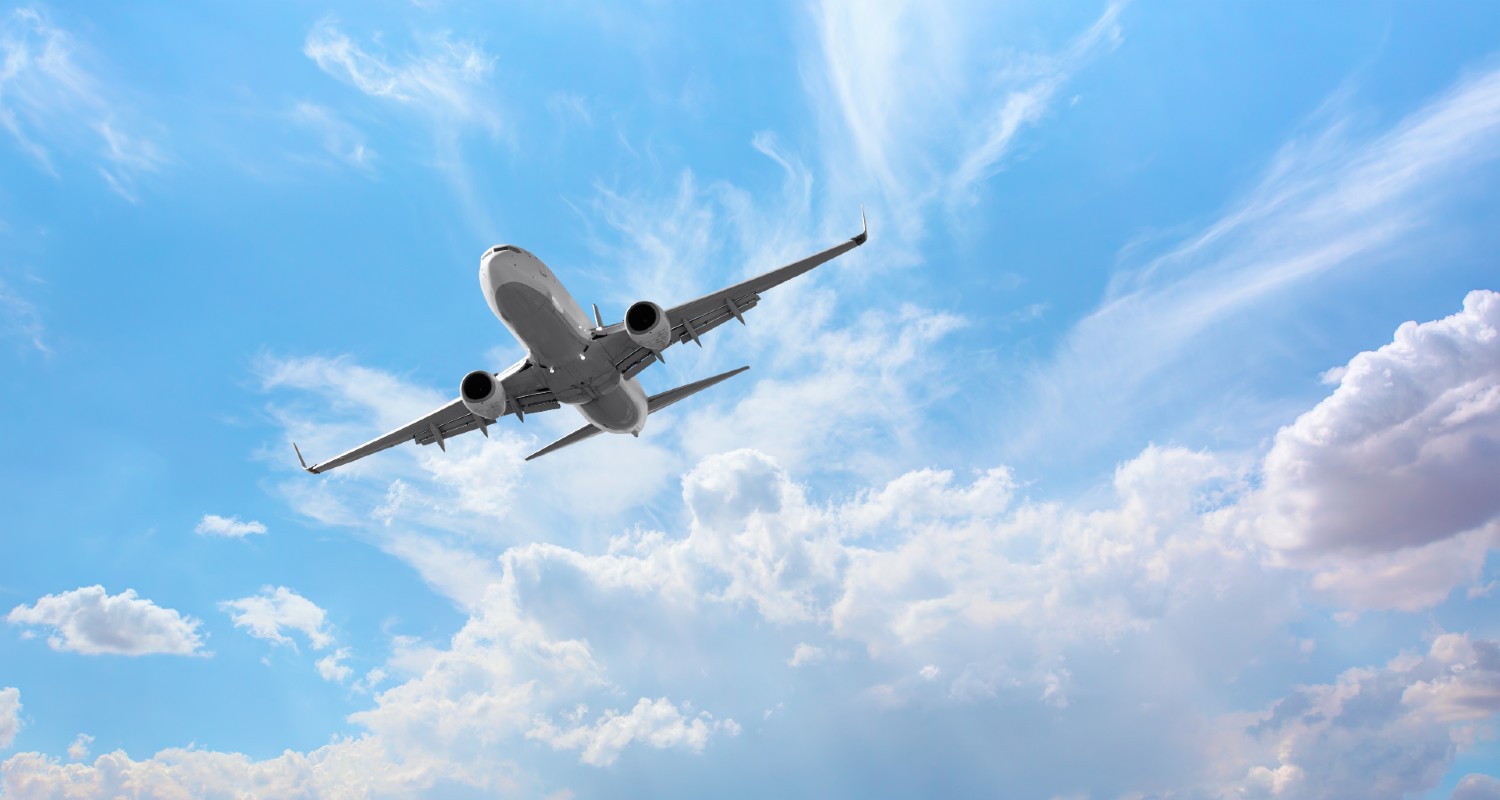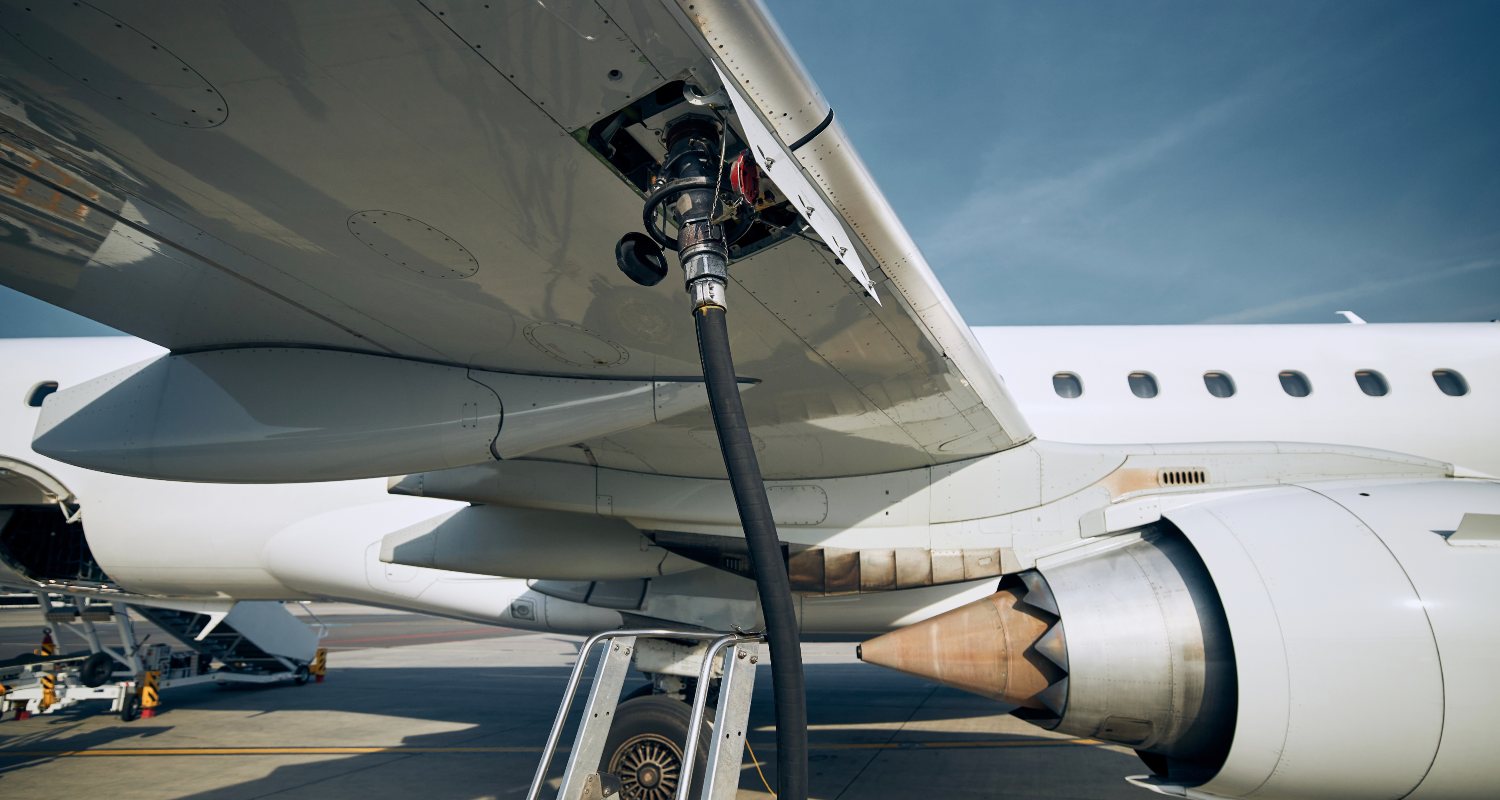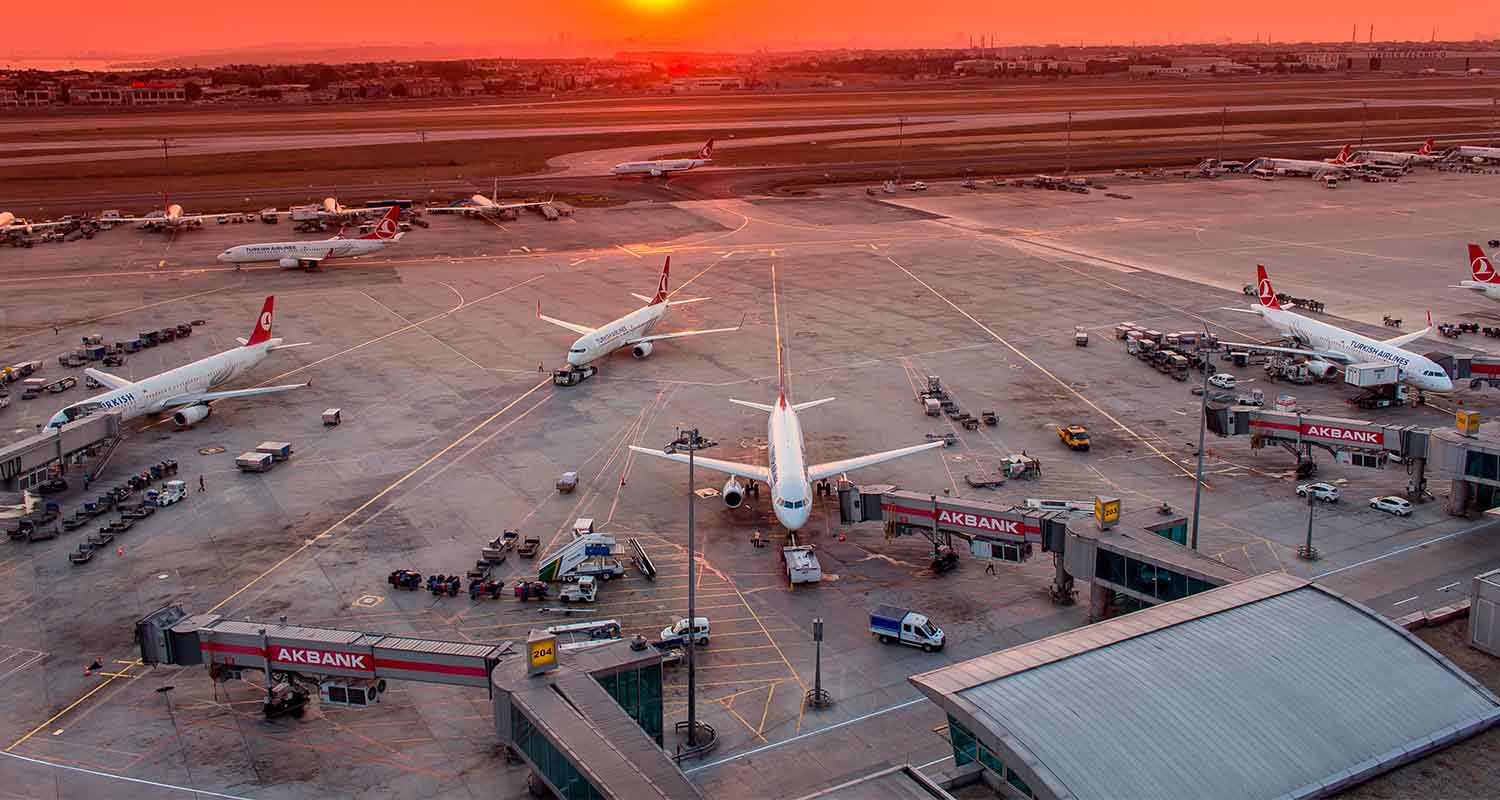
Carbon footprint
Carbon footprint
Flight to sustainability: the airline industry moves closer to decarbonization
Reading time: 12 min
Technological advances and biofuel are key to allowing air travel to have a lower and lower impact on the environment, and demonstrate the aviation industry's commitment to reducing it's carbon footprint.
Every day an average of 3,257 flights take off from Spanish airports, according to data from ENAIRE, the air navigation manager in Spain. All carrying hundreds of hopeful passengers longing for a vacation in some distant paradise, wishing to close business deals that generate new jobs, or simply hoping to hug their family after being separated by thousands of kilometers. Air transport brings people closer together, allowing for experiences that would have been impossible a century ago; and it's become essential to developing the global economy.
Today, everyone in the sector faces a challenge: to continue to provide these experiences with ever greater speed, efficiency, and comfort for the traveler, while also gradually reducing the sector's carbon footprint. We have seen firm commitments to achieving this goal. A good example of this is the Toulouse Declaration, signed in early February 2022 by the 27 countries who make up the European Union, together with 14 other nations and 146 private companies. The pact between all signatories aims to achieve net zero emissions in the sector by 2050. Work to achieve this has already been ongoing for some time.
Where do biofuels come from?
They are classified depending on the base raw material used to produce each of the four current generations and on the processes used to obtain them:
- 1st Generation Biofuels. Created from agricultural food crops, such as vegetable oils.
- 2nd Generation or advanced biofuels. Made from waste from the agri-food and agricultural industry that is not intended for food purpose, along with the organic portion of municipal waste.
- 3rd Generation Biofuels. Extracted from algae and aquatic plants with a natural oil content of at least 50%. They have not yet been commercialized.
- 4th Generation or advanced biofuels. They use genetically modified microorganisms to improve efficiency in CO2 capture and storage. Still in the experimental phase.
Biofuels, the key to achieving this goal
Biofuels, the key to achieving this goal
The use of sustainable aviation fuels (SAF) is considered the fastest way to achieving this goal. The most advanced and immediate alternative is biojet fuel, which is obtained from waste or biomass. Depending on the type of raw material used to produce them, there are first-generation biofuels, made from vegetable oils and which provide a 60%-reduction in CO2 emissions; and then there are biofuels, which are made from crop waste from the agri-food industry along with the organic portion of municipal waste, which provide even greater emission reductions.
"The high-energy density of biofuels makes them especially suitable for those areas of mobility that require large fuel loads or travel long distances, as in the case of aviation," explains Clara Rey, director of Technology, Customer Centric, and Chemicals at Repsol.
So waste from different industries is processed in dedicated plants and converted into sustainable fuels. Notwithstanding their sustainable value, these fuels are also remarkable for having the same efficiency and properties for air transport as traditional fuels.

Commitment to decarbonization
Commitment to decarbonization
Last March, an A380 took off from Blagnac airport in Toulouse and flew for three hours with a Rolls Royce engine running on 100% sustainable fuel.
Some of the largest companies in the sector have been working now for some time on the best way to expand their use. Airbus, the world's leading aircraft manufacturer, has already taken the first steps. Last March, an A380 took off from Blagnac airport in Toulouse and flew for three hours with a Rolls Royce engine running on 100% sustainable fuel, made up mainly of used cooking oil and waste fats. This milestone is a particularly significant breakthrough, since until then Airbus has only flown with a 50% SAF fuel blend. The goal of reaching 100% by the end of this decade is looking more and more likely.
“In order to be sustainable, regulators, airlines, energy producers, and suppliers must all work together," observes Jorge Caro Terrón, national coordinator for Airbus in Spain. "The transition towards sustainable energy sources will require cross-industry partnerships," he explains. "There are currently more than 10,000 commercial Airbus aircraft in service that are certified to fly on SAF and synthetic fuels."
Significant progress has been achieved in recent years. "Airbus has already embarked on the journey towards decarbonizing its product portfolio," he highlights. "The continuous improvement of aircraft efficiency, the increased use of sustainable aviation fuels, and the commitment to achieving zero-emission aircraft by 2035 will be key to achieving this goal," adds Caro Terrón.
Spain is also making significant progress in sustainable aviation solutions. The best example of this is the commitment to sustainability in the aviation sector signed by Iberia and Repsol mid last year, which has already produced joint activity.
The first litmus test came at the beginning of June. The inaugural flight on the airline's Madrid-Washington route used fuel produced from waste at the Petronor refinery in Bilbao. And it didn't stop there. Iberia has used the same sustainable fuel on its Madrid-Dallas flight and on the reopening of its Madrid-San Francisco route.
"Repsol has already produced three batches of biojet fuel at its refineries in Puertollano, Tarragona, and Bilbao, using residual raw materials and circular economy processes," says Clara Rey. And the results are promising: "These products have cut CO2 emissions to the atmosphere by 1,300 tons," she says.
"Repsol has already produced three batches of biojet fuel at its refineries in Puertollano, Tarragona, and Bilbao, using residual raw materials and circular economy processes"
The challenge does not stop there. In 2023, Repsol will start up an biofuels production unit in Cartagena, which will employ used cooking oil as a raw material. It will have a capacity of 250,000 tons per year. "In the biojet fuel that will be manufactured at the new Cartagena plant, the waste will be hydrogenated, so all the oxygen disappears," explains Javier Aríztegui, portfolio manager at the Repsol Technology Lab. "The resulting product has a chemical composition identical to conventional kerosene but with an infinitely lower carbon footprint," he says.

From biojet to e-jet fuels
From biojet to e-jet fuels
Technology goes hand in hand with decarbonization. Alongside biojet fuel, progress is being made in the production of e-jet fuel, or synthetic fuels. They are produced from CO2 that can be captured from the atmosphere and hydrogen that is generated from renewable electricity.
Towards the end of last year, the first commercial synthetic kerosene plant was unveiled in Germany, with Atmosfair, a non-profit organization, in charge of its facilities. This technology will allow hydrogen to be produced from a mix of water and electricity from nearby wind farms. This pioneering start-up plant already has its first customer: the German airline Lufthansa.
Alongside biojet fuel, progress is being made on the production of e-jet fuel, or synthetic fuels.
Meanwhile, the most ambitious synthetic fuel project in Spain was just launched at the end of May with the presentation of the Decarbonization Hub in the port of Bilbao. This pioneering initiative between Repsol and Petronor will already have a plant to produce synthetic fuels in its initial phase. The aim is for it to be operational by 2024. It is estimated that, in its initial stage, 18,000 barrels of synthetic fuel per year will be produced. This figure would cover the needs of the Madrid-Bilbao air route for an entire year.
“Synthetic fuels will be the perfect complement to biofuels when they reach their production limit due to the lack of waste as a raw material," observes Javier Aríztegui. Joint progress in the use of biojet and e-jet fuel promises to bring the aviation sector closer to the goal of decarbonization.
Technology and the tireless work of public and private institutions means we are getting closer and closer to achieving an environmentally-friendly flying experience. As Jorge Caro Terrón points out, collaboration is essential to achieving this goal: "We have a great responsibility as an industry and as members of society to create a more sustainable future for everyone, and we can only achieve this by working together."
Published in La Vanguardia
